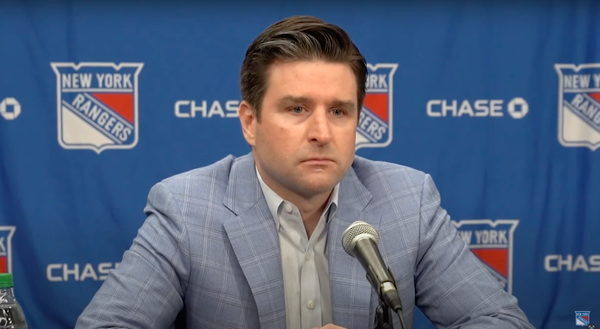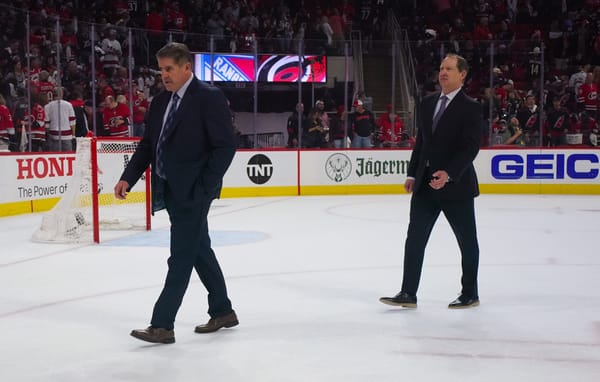Morgan Barron Has a Chance to Make the NHL, and That’s Good Enough
There were plenty of great things to say at the end of last season following 2017 sixth-round pick Morgan Barron’s freshman campaign in college hockey but for one major cause for hesitation; inconsistency. There were times when Barron, who at first was supposed to take a gap year, looked like one of the top players on a high-caliber Cornell team. There were also notable stretches where he would fade into the background. Barron ended the season wtih five goals and 13 assists in 33 games. That was okay for his first year, but going forward Barron would need to assert himself more regularly to establish himself as a legitimate NHL prospect.
Now a sophomore, the 20-year-old Barron is delivering. In 19 games for Cornell, he has produced nine goals and 12 assists, and he leads the team in points (21) by a healthy margin. Per College Hockey Inc, he ranks seventh among all ECAC forwards in points, which is particularly impressive given that five of the players ahead of him are at least 22 years old.
At least by college standards, Barron has quickly developed into a complete player. The concern when the Rangers selected Barron in 2017 was that they were entranced with size. As Barron has proven even more this season, there’s much more to his game than that. An assist like this one shows that he (wearing #27) can make plays.
Though he plays wing now, Barron was drafted as a center and his passing ability has translated. It made him effective from the perimeter as a freshman, but this season he’s upped his game and is making plays from the middle of the ice.
The concept of an “adjustment year,” whether in college or the NHL, is often a euphemism for a bad season. In Barron’s case, however, one can really see how his freshman NCAA season was a big adjustment. At St. Andrew’s prep school, Barron was a player who demanded the puck and overwhelmed the opposition with a combination of speed, puck protecting abilities, and vision. Two years later, Barron is doing that just the same for one of the top hockey programs in the country.
Let’s go back to talking about his size, though. It’s an elusive concept because, in a vacuum, size is useful. However, there are not many players who are capable of properly utilizing that size in a way that works in modern hockey. Here’s a clip of Chris Kreider, who does it better than just about anyone in the NHL, using his size in the defensive zone to assist a goal.
A quick peak over the shoulder lets Kreider know a forechecker is coming, and so he adjusts his body to absorb the contact, create separation between that player and the puck, and create a path for him to move the play up the ice. A play like this makes clear that, yes, size still matters in the NHL when deployed in relevant moments.
I bring this play up because, when watching Barron (again, 27 in white) play against Yale back in November, I noticed a moment that looked awfully familiar.
The takeaway here is not that Morgan Barron is the next Chris Kreider. Kreider has freakish athletic ability that few can match; certainly not Barron. However, this is a transparent example that Barron “gets it.” He knows how to leverage his size when the situation allows for it. Here are a few more examples where Barron’s ability to absorb contact are on display.
The immediate question Barron has to answer is whether he can extend this performance throughout the whole season. Barron produced 12 points in his first 14 games during his freshman season, but then followed that up with just one goal and five assists in his final 19. If he can, then he will establish himself as an NHL prospect worth taking seriously.
Everyone dreams of finding a late round steal that turns into the next Jamie Benn or Anders Lee. And sure, every team should aspire to find those hidden gems. More realistically, though, teams need to simply find guys who have a chance. Even in the best case scenario, Barron a year or two of college plus a healthy AHL stint away before building a career on an NHL third line. That we’re still talking about it as a realistic possibility almost two years later, though, is all the Rangers could have asked for.




